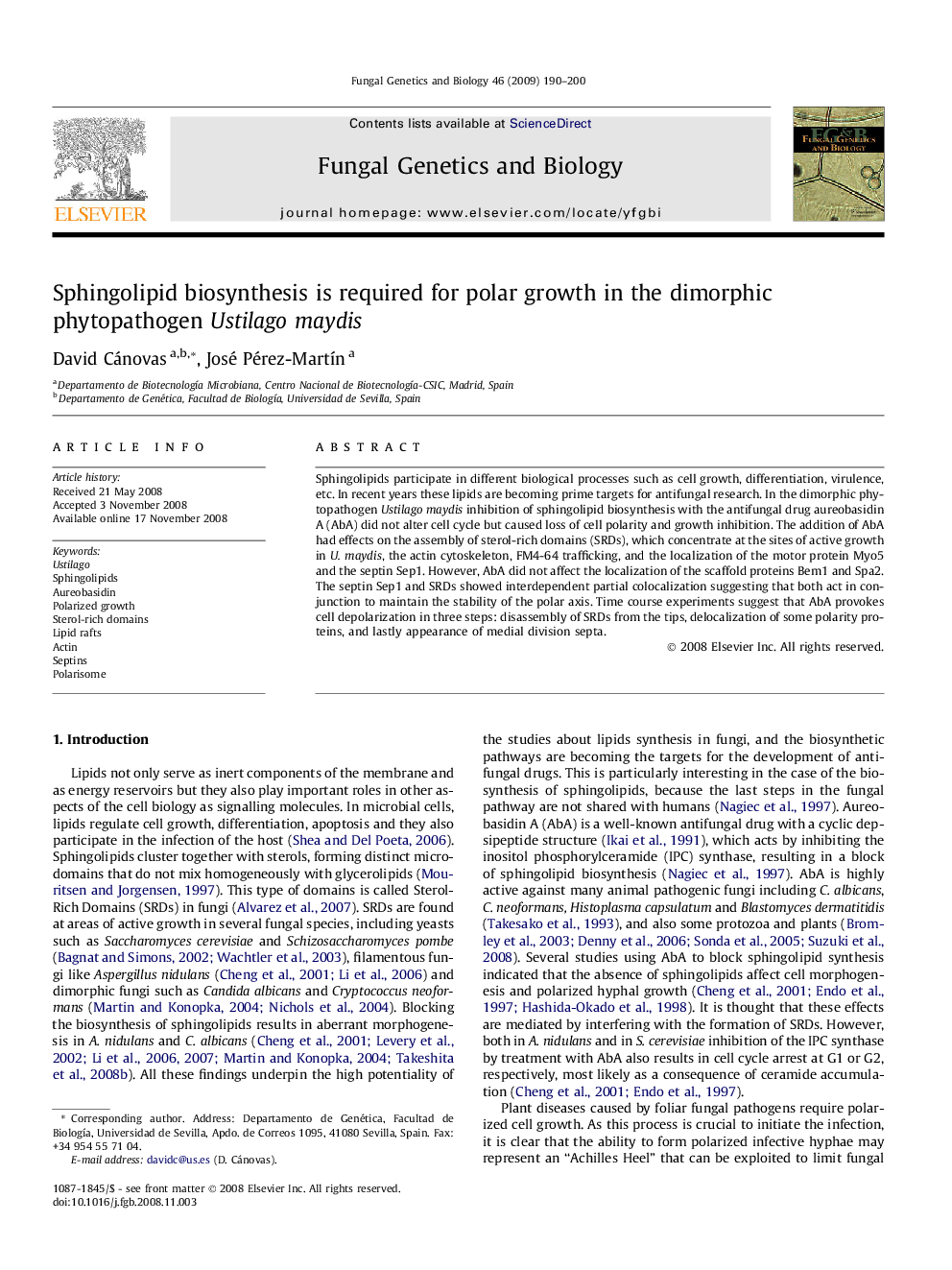| Article ID | Journal | Published Year | Pages | File Type |
|---|---|---|---|---|
| 10939619 | Fungal Genetics and Biology | 2009 | 11 Pages |
Abstract
Sphingolipids participate in different biological processes such as cell growth, differentiation, virulence, etc. In recent years these lipids are becoming prime targets for antifungal research. In the dimorphic phytopathogen Ustilago maydis inhibition of sphingolipid biosynthesis with the antifungal drug aureobasidin A (AbA) did not alter cell cycle but caused loss of cell polarity and growth inhibition. The addition of AbA had effects on the assembly of sterol-rich domains (SRDs), which concentrate at the sites of active growth in U. maydis, the actin cytoskeleton, FM4-64 trafficking, and the localization of the motor protein Myo5 and the septin Sep1. However, AbA did not affect the localization of the scaffold proteins Bem1 and Spa2. The septin Sep1 and SRDs showed interdependent partial colocalization suggesting that both act in conjunction to maintain the stability of the polar axis. Time course experiments suggest that AbA provokes cell depolarization in three steps: disassembly of SRDs from the tips, delocalization of some polarity proteins, and lastly appearance of medial division septa.
Related Topics
Life Sciences
Biochemistry, Genetics and Molecular Biology
Cell Biology
Authors
David Cánovas, José Pérez-MartÃn,
